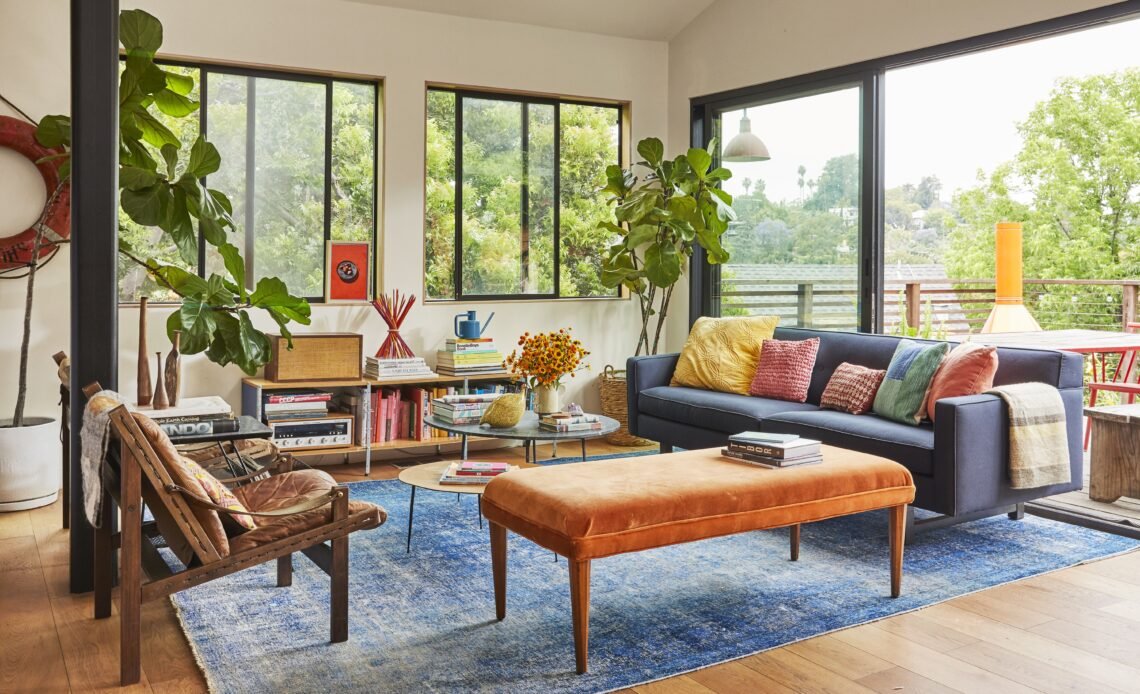Some living rooms are built to stay the same forever. Others need to evolve—sometimes week to week. Whether it’s movie night, playtime, hosting guests, or just changing things up for the fun of it, a flexible living room is a gift to families who value both comfort and adaptability.
The key to building a space that can transform without stress? Intentional layout, smart furniture choices, and a few design tricks that make rearranging feel exciting, not exhausting.
Here’s how to create a living room layout that keeps up with your family’s energy—and can change as easily as your plans do.
Make a modular sectional your foundation
When it comes to adaptable furniture, nothing beats a modular sectional. Unlike traditional sofas, modular sectionals are made of individual pieces that can be configured (and reconfigured) however you like. Want an L-shape for lounging? Done. Need more seating for guests? Rearrange. Hosting a kids’ sleepover? Separate the modules into mini nap stations.
Modular sectionals are especially handy for families with evolving needs. They grow with you, accommodate different occasions, and allow you to switch things up without starting from scratch. Plus, many come with washable covers—crucial for snack spills and surprise messes.
Define zones without building walls
If your living room serves multiple purposes—TV space, play area, reading nook—create zones within the room so it doesn’t feel like everything’s happening on top of everything else.
Try using:
- Rugs to visually separate areas
- Open shelving to act as a partial divider
- Floating furniture (like a modular sectional) to break up space without blocking flow
- Low benches or toy storage units that double as dividers
Defined zones help your space feel organized even when your layout changes. And since these elements are movable, your zones can shift as needed.
Use lightweight furniture for easy shifting
A flexible living room isn’t one where everything’s heavy and hard to move. Incorporate lighter accent chairs, nesting tables, poufs, and stools that can easily be picked up, swapped, or stored when not in use.
Look for:
- Coffee tables on casters
- Ottomans that double as seating or storage
- Foldable or stackable chairs for occasional use
- Floor cushions for informal, kid-friendly setups
The goal is to create a space where change feels easy—not like a workout.
Embrace symmetrical (and asymmetrical) layouts
Symmetry offers balance—but asymmetry offers freedom. Start with a basic symmetrical layout: your modular sectional facing a media console, flanked by two chairs. From there, try shifting one chair into a reading corner, moving a piece of the sectional to the opposite side, or angling furniture to create cozy corners.
A flexible layout doesn’t have to look “perfect.” It should look lived-in, creative, and responsive to how you’re actually using the space. Rearranging furniture doesn’t have to follow rules—it just needs to feel good to your family.
Design with “flow” in mind
When moving furniture around, make sure to preserve clear walking paths. Avoid placing large pieces directly in traffic zones or doorways. Leave space for kids (and grown-ups) to move comfortably from one zone to another without bumping into furniture.
A good rule of thumb: try to keep at least 2–3 feet of walking space between larger pieces. This keeps your space feeling open and makes rearranging easier down the line.
Make storage part of the design
Rearranging is easier when clutter isn’t in the way. That’s why flexible storage is your secret weapon. Look for pieces that serve multiple functions—storage ottomans, TV consoles with drawers, built-in shelving, or decorative baskets that hide toys in plain sight.
When storage is built into the room itself, cleanup becomes faster and rearranging feels less like a project and more like play.
Let decor be flexible too
Wall art, throw pillows, and other accessories often get overlooked—but they can be part of the fun. Try swapping out pillow covers seasonally, using removable wall hooks to hang art or baskets, displaying art on ledges or shelves instead of nailing into the wall, or adding plug-in sconces or floor lamps you can move with your furniture. Flexible decor lets your room’s vibe evolve with your layout—without needing a full redesign.
A living room that lives with you
For families who like to rearrange, the living room isn’t just a place to sit—it’s a place to gather, grow, entertain, relax, and play. It’s where your life unfolds, and it deserves to be just as flexible as your days are.
Start with a modular sectional to give yourself a solid, movable foundation. Build from there with lightweight, multifunctional pieces and intentional zones that can shift and adapt. The result is a space that doesn’t just look good—it works for your family, every day and in every new layout you imagine.







